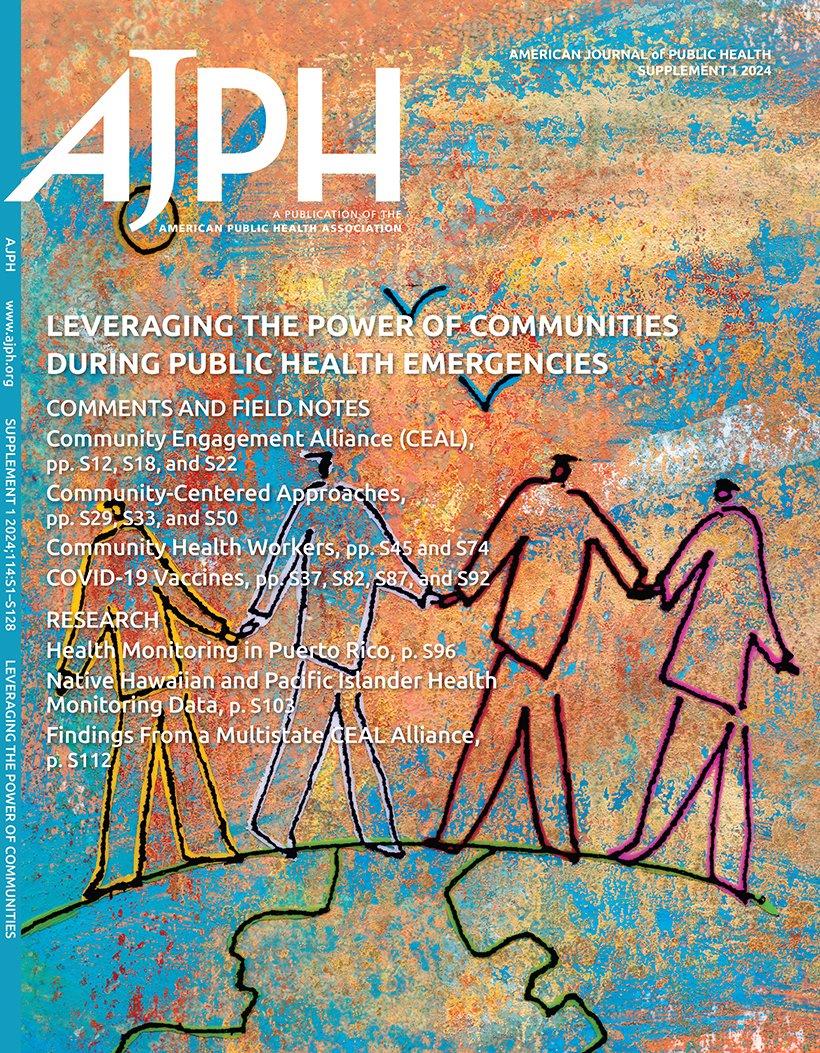Food Industry Compliance With the Display of Front-of-Package Warning Labels at the Final Phase (2020) of Chile's Labeling and Advertising Law.
IF 9.6
1区 医学
Q1 PUBLIC, ENVIRONMENTAL & OCCUPATIONAL HEALTH
引用次数: 0
Abstract
Objectives. To investigate food industry compliance with the display of front-of-package warning labels (FOPLs) on products that exceed regulatory thresholds for being high in calories, added sugars, sodium, or saturated fats after full implementation of Chile's Food Labeling and Advertising Law. Methods. In 2020, trained dietitians took pictures of nutritional information and FOPLs on packaged products in supermarkets. We categorized foods and beverages as requiring FOPLs (or not) using their nutritional composition and ingredients as set out in government guidelines. We compared these classifications with the actual display of FOPLs. Results. About 62.5% of packaged foods and beverages displayed any FOPL. The most frequent label was for energy (38.7%), followed by sugars (35.2%), saturated fats (26.2%), and sodium (22.6%). Compliance with FOPL display was high (93.6% for any "high-in" designation). Lower compliance was observed in nonsausage meat products (83.5%) and soups (84.5%). Candies and sweet confectionery and sausages contributed most to noncompliance with any "high-in" designation. Conclusions. Following the law's full implementation, the food industry complied with the display of FOPLs. Mandatory policies with clear guidelines and monitoring systems can contribute to ensuring and sustaining high compliance. (Am J Public Health. Published online ahead of print September 26, 2024:e1-e8. https://doi.org/10.2105/AJPH.2024.307843).在智利《标签和广告法》的最后阶段(2020 年),食品行业遵守包装正面警告标签的展示规定。
目的调查智利《食品标签和广告法》全面实施后,食品行业在热量、添加糖、钠或饱和脂肪含量超过监管阈值的产品上张贴包装正面警告标签(FOPL)的合规情况。方法。2020 年,经过培训的营养师对超市包装产品上的营养信息和 FOPL 进行了拍照。我们根据政府指南中规定的食品和饮料的营养成分和配料,将其分为需要(或不需要)食品标签的食品和饮料。我们将这些分类与食品标签的实际显示情况进行了比较。结果显示约 62.5% 的包装食品和饮料标示了任何食品标签。最常见的标签是能量(38.7%),其次是糖(35.2%)、饱和脂肪(26.2%)和钠(22.6%)。对 FOPL 显示的遵守率很高(93.6% 的人遵守任何 "高含量 "标识)。非香肠肉制品(83.5%)和汤类(84.5%)的符合率较低。糖果和甜食以及香肠是不符合任何 "高含量 "标识的主要原因。结论。在法律全面实施后,食品行业遵守了展示《食品OPLs》的规定。具有明确指导方针和监测系统的强制性政策有助于确保并维持较高的合规率。(Am J Public Health.https://doi.org/10.2105/AJPH.2024.307843).
本文章由计算机程序翻译,如有差异,请以英文原文为准。
求助全文
约1分钟内获得全文
求助全文
来源期刊

American journal of public health
医学-公共卫生、环境卫生与职业卫生
CiteScore
9.50
自引率
3.90%
发文量
1109
审稿时长
2-4 weeks
期刊介绍:
The American Journal of Public Health (AJPH) is dedicated to publishing original work in research, research methods, and program evaluation within the field of public health. The journal's mission is to advance public health research, policy, practice, and education.
 求助内容:
求助内容: 应助结果提醒方式:
应助结果提醒方式:


